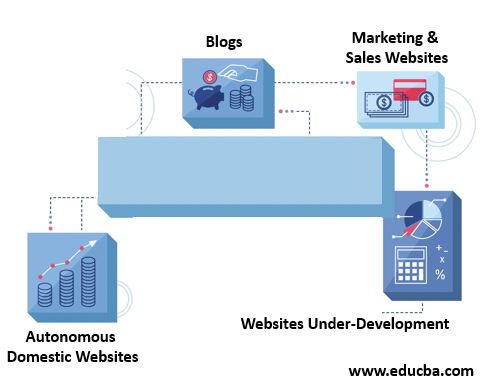Updated May 18, 2023

Definition of Static Website
As the name suggests, static websites are HTML-coded web pages or websites with ongoing content that are accessible to end users. This type of web page and website content is typically preferred over constantly changing online content since it requires less maintenance labor. In order to implement a Static Website, one needs to have fundamental coding knowledge and be effortless to work upon.
How Static Website Works?
Static web pages are also called flat pages or static pages. These web pages qualify as static because the page consists of unchanging items with fixed content placed on the web pages. The fixed content can include various types, such as text, images, GIFs, videos, audio, and more.
As the static pages’ contents stay mostly the same, the user doesn’t have to update the web page often in the name of a quality check or maintenance activity. This helps in keeping the website secure with less effort. In addition, the stationary elements of the web page provide more consistency for the website users. Whenever the user tries to access the website, there is no communication enabled between the system and the database. This leads to loading the web content quickly, and caching makes more sense in cases like this.
Uses of Static Website
Below are the typical applications where Static Website makes more sense, as these websites require–a time setup,
1. Blogs
Blogs are websites created based on a certain subject, and every page’s content is handled as a separate post with unique themes related to the website’s theme. These posts’ contents are placed on the allocated space in the web page, by a simple copy & paste method or by directly typing inside the HTML page description. There are various service providers like WordPress to achieve this without having detailed coding knowledge in HTML.
There are millions of blogs available on the internet for subjects like travel, food, cooking, organizing, training, certification courses, businesses, sharing experiences, medical information, general information, politics, religion, news updates, sharing daily activities, step-by-step instructions for performing specific actions, technology, reviews on products, sports, arts, crafts, geographical information, historical events, history in general, crime, creating awareness on specific topics, etc.
2. Marketing & Sales Websites
As marketing and sales websites require higher flexibility and more reliable content management, Static websites are the way to go. It requires one-time posts to define the organization’s mission, vision, and history. The programmers leave designated areas for placing on the website the items that will be there permanently and for changing the contents as needed. The website handler can upload and take down any content on these websites as and when needed. Static websites provide more flexibility when comparing properties with dynamic websites.
3. Websites Under-Development
Although static websites are a better choice for websites or web applications, they are still in the early stages of development and will likely be under construction in the near future. This is because these websites already have a fully built and operational product operating on them, allowing the website owner to focus more on their development process.
Another advantage is that it is straightforward to update the websites with the latest codes without disturbing the website’s existing functionality. The static websites are easy to synchronize with the various DevOps applications, making it easy for version-controlling processes.
4. Autonomous Domestic Websites
Domestic websites are not industry-grade in terms of technology and duration of usage, as it doesn’t require the website owner to have technological insights. It doesn’t take a team of software professionals to implement this type of website. If the website grows in the future and the user traffic increases eventually, keeping the website as a static application can help accommodate the increasing scalability, as it doesn’t require dynamic loading a new user accesses the website.
Advantages and Disadvantages
Some of the advantages and disadvantages
Advantages
Static Websites are beneficial in many ways, and below are a few of them,
- One of the significant advantages of using static websites over dynamic websites is that static websites require less maintenance or sometimes no maintenance at all. Once the content of a static website is published and set up, it typically does not require frequent updates or changes for a certain period of time.
- Faster web page loading speed, as the website’s fixed items don’t have to contact the back-end systems every time the page loads.
- Accommodates any user traffic, maybe lesser or higher user flow into the website.
Disadvantages
Static Websites also have their drawbacks, and below are a few of them,
- It can have limited functionality, as extensive features require higher technological usage.
- Hard to match the modern-day evolution of technology.
Conclusion
Static Websites are a good option for beginner-level websites, which have room to grow in the coming days, as one can make the website functional with the limitations that come with the static nature.
Recommended Article
We hope that this EDUCBA information on “Static Website” was beneficial to you. You can view EDUCBA’s recommended articles for more information.

